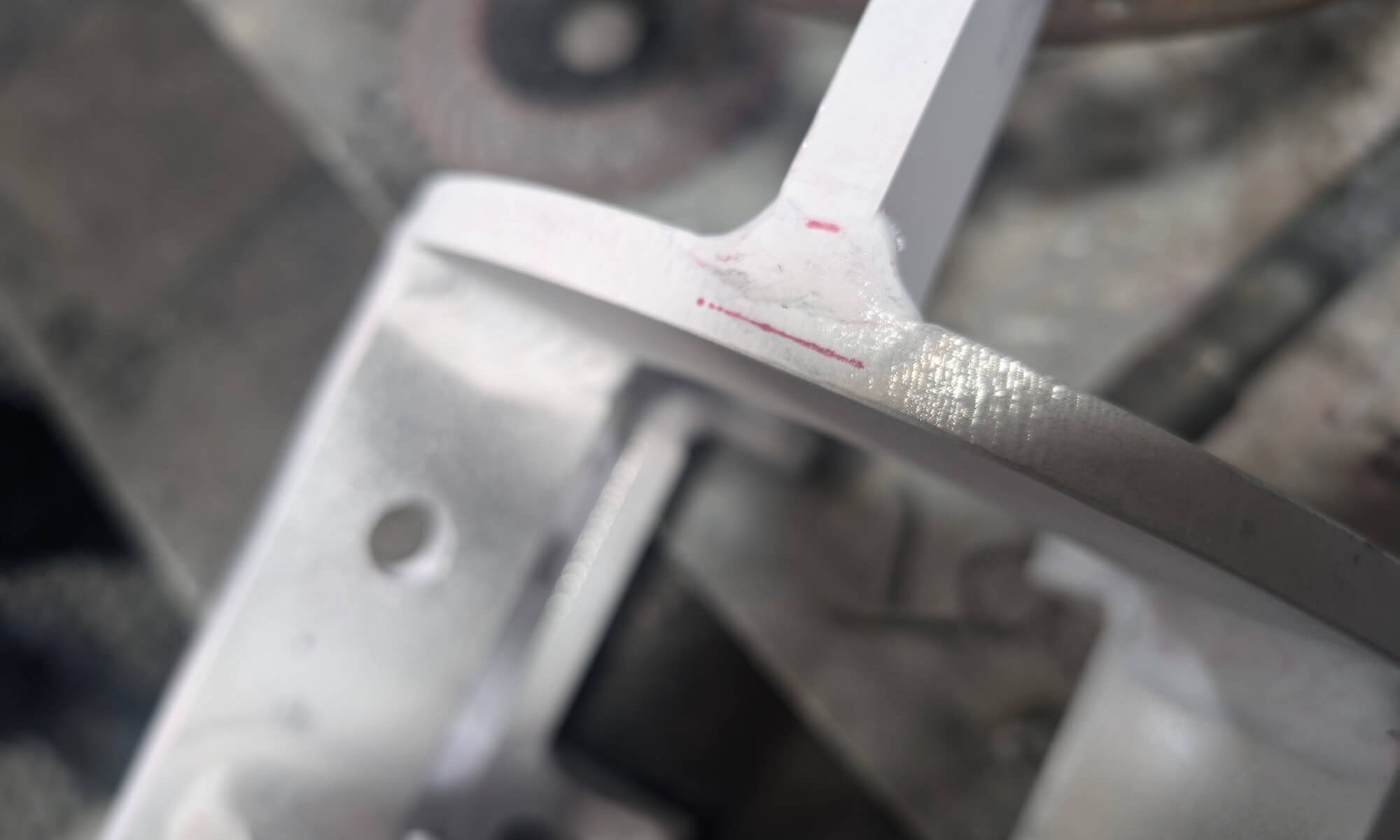Dye Penetrant Inspection (DPI), also known as Liquid Penetrant Testing (LPT), is a widely used non-destructive testing (NDT) method for detecting surface-breaking defects in non-porous materials. It’s a cost-effective and efficient technique, applicable across a variety of industries, including aerospace, manufacturing, and construction. This guide will take you through everything you need to know about DPI, including how it works, its benefits, its applications, and why Bravura Inspection is the trusted choice for expert dye penetrant testing.
What is Dye Penetrant Inspection?
Dye Penetrant Inspection is a simple yet highly effective method used to locate surface-breaking flaws such as cracks, porosity, and leaks in non-porous materials like metals, plastics, and ceramics. This method is particularly useful in identifying defects that might otherwise go unnoticed by visual inspection alone. The process involves applying a liquid dye to the surface of the material. The dye is drawn into any surface defects through capillary action, making flaws visible when a developer is applied. It is an essential tool in ensuring the structural integrity and quality of critical components.
How Does Dye Penetrant Inspection Work?
The DPI process follows a systematic approach to ensure accurate and reliable results.
1. Surface Preparation
The surface of the material is cleaned to remove any contaminants such as dirt, oil, or paint that could interfere with the dye’s ability to penetrate defects.
2. Application of Penetrant
A liquid dye, available in visible or fluorescent forms, is applied to the surface of the material. The dye penetrates any surface-breaking defects through capillary action.
3. Excess Penetrant Removal
After a sufficient dwell time to allow the dye to enter flaws, the excess penetrant is carefully removed from the surface. This step ensures that only the dye trapped in defects remains.
4. Application of Developer
A developer is applied to the surface, which acts as a blotter, drawing out the trapped dye from defects. This makes flaws visible as contrasting indications against the surface.
5. Inspection
The material is visually inspected under normal lighting for visible dye or under UV light if fluorescent dye is used. Technicians assess the indications to identify the size, location, and type of defects.
6. Post-Cleaning
After inspection, the component is cleaned to remove all inspection materials, leaving it ready for further use or processing.
Benefits of Dye Penetrant Inspection
1. Cost-Effective
DPI is a relatively low-cost NDT method that requires minimal equipment while delivering reliable results, making it ideal for routine inspections.
2. High Sensitivity
This technique is highly sensitive to surface-breaking defects, ensuring that even the smallest cracks or imperfections are detected.
3. Versatility
Dye Penetrant Inspection can be used on a wide range of non-porous materials, including metals, ceramics, and plastics, making it suitable for diverse applications.
4. Simplicity
The process is straightforward and requires minimal setup, allowing for quick and efficient inspections.
5. On-Site or In-House Capability
DPI can be conducted either in a controlled laboratory environment or on-site, providing flexibility to meet specific project needs.
Applications of Dye Penetrant Inspection
1. Weld Inspections
DPI is commonly used to inspect welds for surface-breaking cracks or imperfections that could compromise the integrity of a structure.
2. Castings and Forgings
This method is effective in detecting surface flaws in castings and forgings, ensuring product quality and reliability.
3. Pipes and Tanks
Dye Penetrant Inspection is used to identify leaks or cracks in pipes, tanks, and pressure vessels, helping to prevent failures and maintain safety.
4. Aerospace Components
In the aerospace industry, DPI is critical for inspecting components such as turbine blades and fuselage panels to ensure they meet stringent safety standards.
5. Machined Parts
DPI is often applied to inspect machined components for hairline cracks or defects that could affect performance or durability.
Types of Penetrants
1. Visible Dye Penetrants
These are easy to apply and inspect under normal lighting conditions. They are cost-effective and suitable for general-purpose inspections.
2. Fluorescent Dye Penetrants
Fluorescent dyes require UV light for inspection, offering greater sensitivity and making it easier to detect fine cracks or defects in critical applications.
Why Choose Bravura Inspection for Dye Penetrant Inspection?
At Bravura Inspection, we are committed to delivering high-quality Dye Penetrant Inspection services tailored to your specific needs.
1. PCN Level 2 Certified Technicians
Our technicians are PCN Level 2 certified, ensuring inspections are carried out with the highest level of expertise and precision.
2. Advanced Equipment
We use the latest DPI equipment and materials to deliver accurate and reliable results for a wide range of applications.
3. Tailored Solutions
Whether you need on-site inspections or laboratory testing, we provide flexible solutions to meet your unique requirements.
4. Comprehensive Reporting
Our detailed inspection reports include photographs and actionable insights, giving you a clear understanding of any defects and their implications.
5. Commitment to Quality
We adhere to strict industry standards and best practices, ensuring that your components are inspected to the highest level of accuracy and reliability.
Ensuring Safety and Compliance
Dye Penetrant Inspection is a critical step in maintaining the safety, integrity, and compliance of your components. Regular inspections help identify defects early, preventing costly failures and ensuring that your assets meet industry standards.
Contact Bravura Inspection Today
Ensure the safety and reliability of your components with expert Dye Penetrant Inspection services from Bravura Inspection. Contact us today to discuss your requirements and schedule an inspection. Call us on 01745 294367 or email [email protected] for more information.

